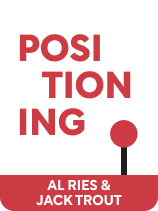

This article is an excerpt from the Shortform book guide to "Positioning" by Al Ries and Jack Trout. Shortform has the world's best summaries and analyses of books you should be reading.
Like this article? Sign up for a free trial here .
Does your business have a market positioning strategy? What path should you take to beat out the competition?
In their book Positioning, Al Ries and Jack Trout discuss market positioning strategies for established market leaders, aspiring market leaders, and established leaders entering a new market. Regardless of your position now, there’s a strategy that fits your business.
Keep reading to learn about these market positioning strategies.
Market Positioning Strategies
How do you cement your position as the market leader? Ries and Trout discuss different market positioning strategies depending on whether you already are the market leader and just need to stay there—or whether you want to become the market leader.
Strategy for an Established Market Leader
If you are already in a position of market leadership, maybe all you need to do is reinforce your existing position. However, according to Ries and Trout, simply advertising that your product is the best won’t convince anyone. You still need a market positioning strategy.
Instead, Ries and Trout recommend promoting yourself as the originator of the genuine article. Since leaders are typically the first to occupy their respective positions, this claim seems credible, and it implies that competing products are mere imitations, giving people a reason to buy the real thing from you.
(Shortform note: This market positioning strategy assumes that the market is not disrupted by technological breakthroughs. However, in some scenarios, being known as the originator of a genuine article that’s now regarded as obsolete can work against you if everyone wants the new and improved version. In The Innovator’s Dilemma, Clayton Christensen explains that disruptive innovations can allow small start-ups to displace established market leaders. He explains that the new technology may be first introduced in a niche market that is too small for the overall market leader to bother competing in, but if it gains traction there, it may expand into adjacent sectors until it dominates the whole market and displaces the market leader.)
Strategy for an Aspiring Market Leader
Suppose you’re not a market leader yet, but you have identified a niche that is worth developing, which nobody else is developing yet. In this case, based on Ries and Trout’s recommendations, we may infer that all you need to become the market leader is a product that fulfills the demand, a suitable name, and an ad campaign that raises awareness about it.
However, their discussion of this scenario also highlights the importance of appealing to expectations and repositioning the competition. It might be a good idea to include these elements in your market positioning strategy.
Appeal to Expectations
Recall that it’s easier to get a message across if you appeal to people’s expectations. Thus, Ries and Trout point out that if you introduce a totally new product, it’s important to compare it to something they’re familiar with. As an example, they discuss how early automobiles were marketed as “horseless carriages.”
| Market Alternatives and Product Alternatives Moore takes this concept a step further, asserting that people need alternatives to compare your product to before they will position you as the market leader. If you’re introducing a disruptive technology, he recommends presenting it relative to two alternatives: the market alternative and the product alternative. The market alternative is what your product will most directly compete with in the market. Building on Ries and Trout’s example, the automobile would ultimately replace horse-drawn carriages as people’s primary means of transportation. Thus, calling an automobile a “horseless carriage” helped to position it as a market alternative to horse-drawn carriages. The product alternative is a product that is based on similar technology but is used for something else. For example, if gasoline-powered railroad engines had caught on before automobiles did, early automakers might have tried marketing their cars as “personal locomotives” instead of “horseless carriages.” |
Reposition the Competition
Ries and Trout also assert that you can establish an advantage in a market sector by repositioning your competitors. To do so, discredit the existing market alternative to your product.
For example, perhaps you’re a pharmaceutical company looking to introduce a new flu vaccine that’s formulated specifically for women. To become the leader of this niche, you’ll have to convince people that your product is better for women than your competitors’ gender-neutral flu vaccines.
However, according to Ries and Trout, simply claiming that your product is better in some way is generally not effective. Instead, they advise that if you expose a deficiency of the current lead product, that creates an opening in your niche for a product that overcomes that deficiency, and compels the market to inaugurate a new leader in the new niche.
They go on to point out that people are more likely to pay attention to bad news than to good news, which means any bad news about your competitor that you disseminate is likely to get more traction than good news about your product. In our womens’ flu vaccine example, you could run an ad campaign to raise awareness about side effects of the gender-neutral vaccine on women’s health. Then you would present your product as a solution to mitigate the risk of these side effects.
| Exploring the Origins of Negativity Bias A recent study reviewed much of the psychological research to date on negativity bias, or the tendency to weigh negative impressions more heavily than positive ones. It explored many dimensions of negativity bias, ranging from food-based studies with animals to studies of language, culture, and morality across many different populations. It concluded that negativity bias is a real phenomenon that is common in both humans and animals, and may arise partly from natural selection: Individuals that fail to react to negative stimuli tend to be eliminated from the population, while there is no comparable effect for positive stimuli. However, the study also concludes that negativity bias is too complex to be explained by natural selection alone, and calls for further research. |
Strategy for an Established Leader Entering a New Market
What if you’re in a position of market leadership with one product, but you want to launch a new product in a different market sector? Ries and Trout argue that it’s better to introduce a new brand that you can position in the new market even if you’re already a leader in another market. The reason for this is the pitfall of line extensions, which they also discuss in their book. This should be considered when designing this sort of market positioning strategy.

———End of Preview———
Like what you just read? Read the rest of the world's best book summary and analysis of Al Ries and Jack Trout's "Positioning" at Shortform .
Here's what you'll find in our full Positioning summary :
- A strategy of framing your product, service, company, or self against your competitors
- How to use the concept of positioning to further your career development
- Harmful positioning strategies you should avoid






